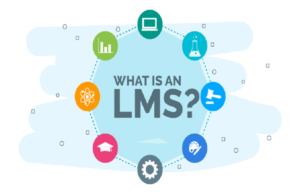Data reconciliation (DR) can now be considered an essential and mandatory business process for any company that deals with massive datasets and migrates data often. After the data migration, the reconciliation comes in to compare the target data with the source data to ensure that the migration occurred successfully and there was no missing information during the transfer and there were no incorrect entries.
The ideal scenario is to have data reconciliation as an automated part of the data flow, set to happen before and after the data migration. So, as soon as the migration is finished, all the data transferred will be checked and compared with the source to guarantee that everything was done correctly.
Having the right tools to complete this process is essential, as it’ll help the teams maximise the productivity and focus on other strategic tasks, so that’s why companies are adopting online reconciliation, as it’s faster, easier and fits most data flows, especially for those setting the reconciliation to happen along the migration process as cross-check to ensure the data integrity.
Why is Online Data Reconciliation Important?
As mentioned above, data reconciliation is a much-needed process for any company that performs data migration often, as it will ensure that all the data will be correctly transferred.
And although the migration phase can happen automatically inside the data flow with a robust strategy and good systems supporting it, data still can get lost, network issues can appear, and even the tools used by the company can present communication problems. So reconciliation gets in to guarantee that the data will arrive at the target without changing.
The issues can lead to:
- Missing data
- Incorrect values
- Duplicate data
- The wrong format or badly formatted values
- Broken communication and relationship between systems
The approach to data reconciliation and the best method depends on the company and what its needs are, but online reconciliation is by far one of the most popular and easier methods that work for all, as the reasons why data reconciliation is important are:
- Adopting data reconciliation into the data flow will help the data users extract only accurate and reliable information to help with analysis and insights.
- It helps to produce only consistent data that will make the chances of issues drop exponentially.
- Reconciliation can also be a key process for data integration.
Making Online Reconciliation Work
As most companies need to reconcile massive amounts of data in a small period of time to ensure productivity and zero issues inside the data flow, online reconciliation became the most used method as it’s easy to implement and integrate with other systems that the company already has working.
The web tools for data reconciliation deal well with the data already formatted into the way the organisation needs it while checking the several sources of systems and tools for new data being migrated. The main benefit of the online reconciliation method is the possibility of always seeing real-time data with an easy-to-use interface.
The gains in productivity are enormous, as the company can pull information easily to check if the data is correct, compare the sources, run audits, create reports and reconcile to other systems very quickly.
The online reconciliation method also has the ability to digest data in any format, so the data users can spend their time doing analysis and working on the issues instead of manually preparing the data to go through the reconciliation – and in some cases, it’s possible to set the tool to give the company some alerts or notifications if the variations and issues they are trying to avoid happen, so the team can jump right in and fix it.
The basic features of the online reconciliation method should be able to support most companies’ needs, so before implementing it to your data flow, make sure that the method will provide:
- Easy to pull reports, that will explain the data life inside the reconciliation process and the comparison of the source to the target.
- The ability to identify issues, fix most of them before the data keeps running, and show the means to help the data users how to solve the issue.
- The possibility of creating matching rules separately for each data set, so the data is being rightly compared and matched to its source according to the company’s policy and governance.



